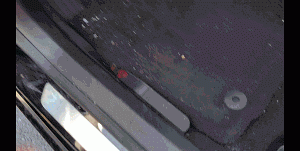Mazda Symbols So, what is that light on your dashboard? What follows is easily the most complete list available of symbols and warnings that may appear in and on your car’s dashboard or instrument cluster. The following are warning lights and indicators found in vehicles built by Mazda. Click the link to the right of …
Tag: Mazda
Permanent link to this article: https://dashboardsymbols.com/2019/06/warning-lights-and-symbols-seen-in-mazda-vehicles/
Permanent link to this article: https://dashboardsymbols.com/2018/12/does-your-owners-manual-have-a-troubleshooting-guide/
Start a Mazda with a Dead Key Fob
How to Start a Mazda with a Dead Key Fob There are several methods for starting a Mazda vehicle that has a dead battery in the key fob. We start with the most recent models, which use the simplest method. But first, if you are still locked outside, click here. Second, you can find video …
Permanent link to this article: https://dashboardsymbols.com/2018/11/mazda-dead-key-fob-help-part-ii-getting-started/
Mazda Videos: Help with Key Not Working
How to Open, Start and Replace Fob Batteries in Mazda Vehicles Seven Mazda videos with Help with Key Not Working We have seven videos offering help to Mazda drivers who’s key fobs or remote controls have gone dead. Update featuring a new door handle from 2019/2020. ————————————————————– 2017 Mazda3 ————————————————————– 2018 CX9 ————————————————————– Post 2013 ————————————————————– …
Permanent link to this article: https://dashboardsymbols.com/2016/05/mazda-video-help-with-dead-key-fobs/
Tragic Incident Points to a Need to Build to Intuition
Intuition Needed Our mission at DashboardSymbols.com is to make new auto technologies simpler to understand and use so that you can feel safe and secure. Electronics rarely have intuitive solutions when problems arise. We have long railed about car companies making getting in a push-button start car difficult when an electronic issue strikes, but we …
Permanent link to this article: https://dashboardsymbols.com/2015/06/tragic-incident-points-to-a-need-to-build-to-intuition/
Wait, you were locked IN the car?
Locked IN?? A few months ago, an item out of New Zealand relayed a story of an older couple who spent 13 hours locked inside their new keyless start Mazda, and nearly died. They had left the key fob outside the car and mistakenly thought that it was the only way to unlock the car. …
Permanent link to this article: https://dashboardsymbols.com/2015/03/wait-you-were-locked-in-the-car/
Open a Mazda with a Dead Key Fob
How to Open a Mazda with a Dead Key Fob First, if you are already inside, click here. Second, you can find some video help here! Finally, if you need or want another manufacturer, click here. Retrieving the mechanical key Early key fob For early Mazda models, slide the release lever on the back of the …
Permanent link to this article: https://dashboardsymbols.com/2012/04/mazda-dead-fob-help/
- 1
- 2




Does Your Owner’s Manual Have a Troubleshooting Guide?
How Deep Is Your Owner’s Manual? We’ve done a couple of owner’s manual rants and got to thinking about where the average driver might look in their respective manual if they ran into trouble, specifically with dead or dying key fobs. So, we examined a sampling of owner’s manuals from BMW and Mini, Fiat Chrysler, …
Continue reading